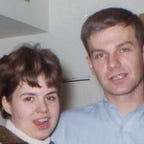Artists of the Diamond
French Baseball History Part 2
It was not exactly the Yankees/Red Sox rivalry, but it was fierce: the competition between the baseball-playing artists of Pont-Aven and their counterparts in Concarneau. The two picturesque coastal towns of Brittany drew fleets of aspiring painters in the summer months of the 1880s, among them many Americans.
On weekends brushes were put aside and replaced by bats and balls. Artists like Henry Kenyon, Lowell Birge Harrison, Herbert Denman and Howard Butler scouted fields they could transform into diamonds for Sunday afternoon games.
Butler, however, was reluctant to join in at first because he did not believe in playing ball on the Sabbath. “I am the only artist left in Concarneau,” Butler wrote to his family one Sunday in 1885. “All the rest have gone on a picnic to Pont-Aven.” That picnic included a baseball game, a challenge from the rival art colony of Pont-Aven.
He couldn’t help but feel left out which was why he decided to put on a little display for his friends. “I showed the Concarneau men some fancy twist pitching. They were delighted.” The “fancy twist pitching” he was talking about was undoubtedly the recently-developed curve ball and then, like now, it was a pitch that could be used to good effect. The Concarneau artists were so impressed that they made sure games were shifted from Sundays to Saturdays so Butler could play.
His first game was played on a field “offered to us by a rich gentleman here in Concarneau who also provided awnings, and tables and chairs for our invited guests — of which there were about fifty, mostly French ladies who were deeply interested in seeing what was to them an entirely new form of sport. Some brought American flags which they had made in honor of the occasion.”
However one might describe the game, it certainly was not “art.” Butler’s team won 47–15. Much of the credit, said Butler modestly, went to a St. Louis man “who is about a head shorter than I am and almost as broad as he is long. We call him Shorty.” His real name was Charles Lazar, and he “stood first in drawing at examinations for the Beaux-Arts last year.” But it was Shorty’s skills on the diamond that thrilled French spectators and resulted, said Butler, in Pont-Aven “returning home with very long faces.”
Their long ride back, however, was cushioned by a sit-down breakfast for the seventy or so spectators and players that was held immediately after the game under trees surrounding the playing field. It’s probably safe to say Paul Gauguin chose not to be there. Shortly after arriving in Pont-Aven, he’d written to his wife saying, “I take psychological satisfaction in ruling the roost here in Pont-Aven. All the artists fear me and like me. Not a single one resists my conviction.”
Unless, of course, there was a baseball game scheduled.
